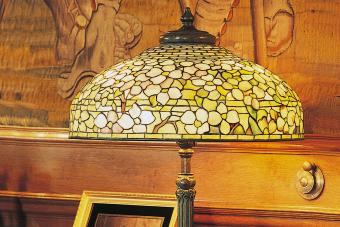
Looking for antiques blue and white transferware is one of the more challenging tasks for the antiques shopper but also one of the more common. Artisans started making transferware in the 1750s, but most of the pieces sold today are from much more recent decades.
History of Antiques Blue and White Transferware
In the 1750s, artisans in England began to use a transfer technique to create beautiful new dishes. These artisans would use a copper plate. These plates are not dishes intended for eating but instead are flat pieces used to etch designs. Artisans put designs onto the copper plates and then used heat to transfer the image to a very thin paper, similar to tissue paper. The artisan then put the paper engraving over a piece of pottery, fired it in a low-temperature kiln, and ended up with a beautiful piece of art.
Over time, artisans designed more elaborate patterns. They did keep with pretty similar colorings, however. Antiques blue and white transferware is one of the more popular color choices artisans made at the time and one of the most sought-after patterns by antique collectors today.
Artisans used transferware as a way to make nice dishes more affordable to the general population. At the time, most people still had very primitive clay or stone dishes. More elaborate versions had to be hand-painted, which was time-consuming and expensive. As ceramics became more popular, artists began to find new ways to make items available to more people.
Valuing Transferware
Authenticity
It is possible for people to replicate the transferware look, and they often do. The blue and white pattern in particular is often imitated in contemporary versions of china and other place settings. These pieces are not actually transferware, however, as they are made with more modern methods. Real pieces will have lines through them from the transfer paper. These lines are faint and almost appear as cracks, but you should examine potential antique pieces for authenticity before spending money on them.
Age
The age of transferware is one of the most important factors in determining its worth. This type of ceramic dish was very popular in the 1800s. Though the process first came about in the 1700s, it gained mass popularity about a half-century later. Most of the plates from this time period have disappeared, however, as families got rid of them. The few remaining pieces from this period can be quite valuable. More common are plates from the twentieth century. These range from designs featuring local sites as well as more traditional patterns.
Design
When this method became popular, the affluent circles of Europe were obsessed with everything related to Asia (at the time called the Orient). These "Oriental" styles were popular in transferware as well. The blue color so often associated with this type of dinnerware is called "Chinese blue" and was indicative of the fondness for Asian themes and patterns.
Collecting Transferware
Today's transferware is available at many antique stores. The Transferware Collectors Club even has listings of all stores in certain areas that make this antique available. These stores tend to have varying ages and values of transferware available. Though some make their wares available online, it is important to remember these pieces may not still be available for sale.
Many circles or organizations also exist to help with people who are looking for authentic antique transferware. These groups offer information about determining the value of transferware and also may include pieces for sale. Some companies still make transferware. These companies are located primarily in the northwestern United States, and they have varying designs but still focus on the two-color choices, such as the blue and white. Determining the value of antiques can be difficult, but using experts and price guides will help.
Here are some of the organizations for transferware enthusiasts:
Even outside collecting, transferware can be a nice addition to a home's dining areas. These pieces can be purchased inexpensively and displayed for a beautiful look.







